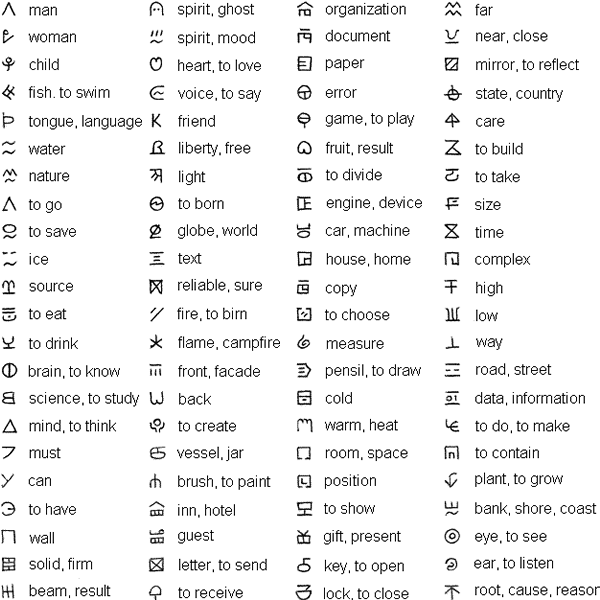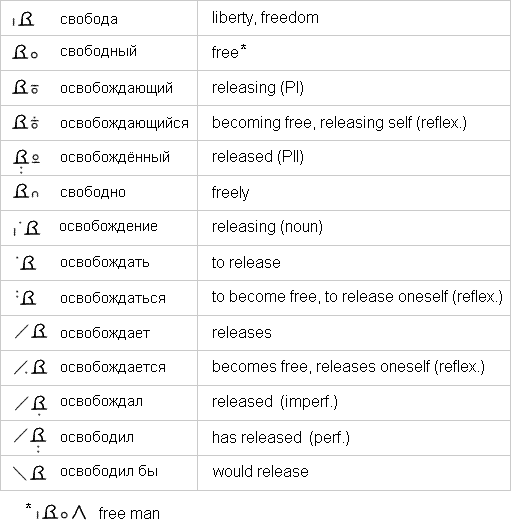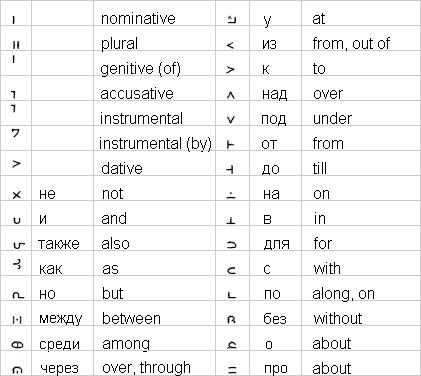Reonji

Reonji is a hieroglyphic writing system inspired by the Egyptian,
Chinese and Japanese scripts and invented by Leonid Eliseev, who started
working on it in 1990. He tried to make his script compact, convinient
and fast to use.
Initially he made it as a script for a constructed language with
no pronouncation and a structure close to English. Later he gradually
adapted it to write Russian, though it contains many constructions
with no analogues in Russian. He uses it for his private notes.
Notable features
- Type of writing system: hieroglyphic.
- Direction of writing: left to right in horizontal lines.
- Number of characters: about 800.
- Used to write: Russian.
- The characters are all small ideograms with a simple shape
and can be drawn by hand in a square 5×5 mm.
There are two types of characters: ideogram (full-sized),
and auxilliary characters (small size), which represent the
prepositions, prefixes, suffixes, conjunctions, etc. - Every ideogram character represents a meaning. The character
itself doesn’t have a pronouncation, but is used for writing several
words and sometimes inherits the pronouncations from them. - There are three ways of word formation:
– By using grammatical constructions inherited from the protolanguage.
– Prefix + radical [+ suffix]. Prefixes are writen with same
characters as prepositions, but in the upper position.
Often the meaning of the resulting word is far from meaning of
radical character. This way typical for Russian.– By combining two or more characters. This combination is used for
particular words that are not linked phoneticaly with components. This
way was inspired by Japanese kango and many of the words
are calques from Japanese.– Often the same word can be written using all this ways.
Reonji characters

Word forms

Auxilliary characters

Sample text
![]()
Russian version
Все люди рождаются свободными и равными в своем достоинстве и правах. Они наделены разумом и совестью и должны поступать в отношении друг друга в духе братства.
Transliteration
Vse ljudi rozhdajutsja svobodnymi i ravnymi v svoyom dostoinstve i pravakh.
Oni nadeleny razumom i sovest’ju i dolzhny postupat’ v otnoshenii drug druga
v dukhe bratstva.
English translation
All human beings are born free and equal in dignity and rights. They
are endowed with reason and conscience and should act towards one another
in a spirit of brotherhood.
(Article 1 of the Universal Declaration of Human Rights)
